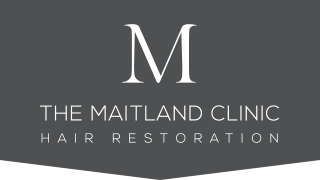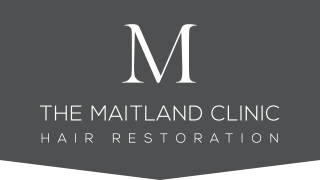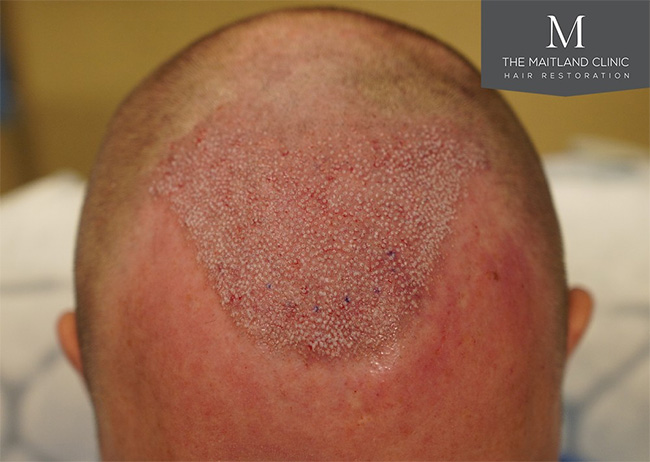How to remove scabs after hair transplant? (+ when)
6th April 2021
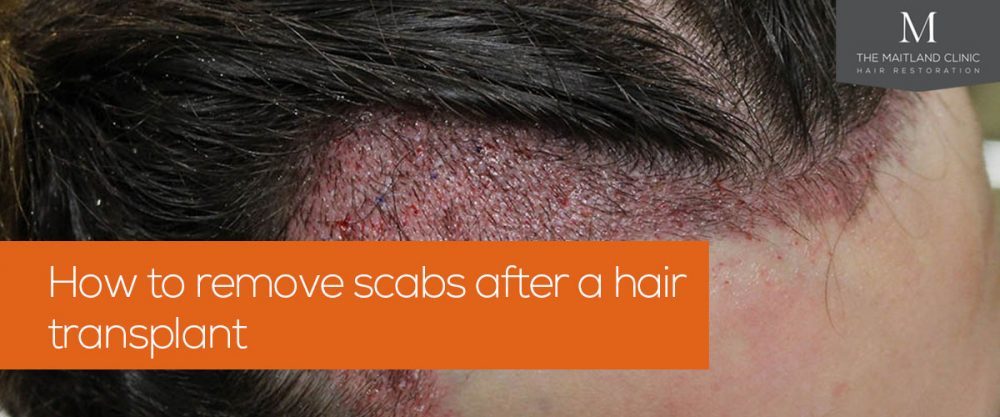
Undergoing a hair transplant is an exciting time and it’s natural to want to speed up the healing process. With this in mind, many of our patients ask about how to remove scabs after a hair transplant, and when to remove scabs after a hair transplant surgery, and how long hair transplant scabs last. At The Maitland Clinic we provide full information on how to care for your scalp following surgery, helping to ensure a timely recovery and great natural-looking results.
So, how to remove scabs after a hair transplant? We recommend that patients gently massage their scalp with their fingertips when washing and soaking their hair. This will help to soften the scabs and encourage them to fall off naturally. Although it may be tempting, you should avoid picking your scabs after hair transplant surgery as this may dislodge the newly implanted grafts. With the correct washing regime, most patients are scab-free around 10 days after surgery.
When to remove scabs after a hair transplant surgery?
As with any healing wound, the scabs after hair transplant procedures may feel slightly itchy but it’s important not to scratch them as they are only a temporary condition. The newly implanted hair grafts are very fragile during these crucial first few days and any contact may dislodge or damage them. This could create empty spots on the scalp and jeopardise the success of the whole procedure. Your hair grafts should be secure by the sixth postoperative day and it’s at this point that you can usually soak and moisturise your hair to encourage the scabs and crusts to lift off.
How long do hair transplant scabs last?
Hair transplant scabs form and then normally last between 7 and 14 days before they start to fall off naturally. Whilst they could be itchy, we do recommend that you do not itch them during this healing process period, as it could cause an infection, or damage the newly grafts implanted underneath from the hair transplant procedure.
Is crust normal after hair transplant?
Yes, crust is perfectly normal after hair transplant surgery. What you feel as crust, is small hair transplant scabs, that as we’ve already said, scabs fall off between 7 to 14 days after the hair restoration procedure.
Scab removal after hair transplant / dealing with hair transplant scabs
The two main methods of transplanted hair at The Maitland Clinic are known as Follicular Unit Transplant/strip (FUT) and Follicular Unit Excision/Extraction (FUE). These procedures involve taking healthy hair follicles from a donor area of the patient’s scalp and transplanting them to the areas affected by hair loss (the recipient area).
In both cases, our leading surgeon and renowned hair restoration expert, Dr Edward Ball, makes tiny incisions in the recipient areas using specialist blades of 0.6mm to 1.1mm, depending on the patient’s skin texture and the size of the grafts. This stage determines the distribution and direction of growth of the new hair. Dr Ball’s highly skilled team of technicians then implant the hair grafts into the balding areas of the scalp.
Every incision in the donor area or new hair area inflicts a degree of trauma to the scalp and a tiny scab will form in its place. We find that correct sizing of the recipient site incisions to the size of the grafts creates a good seal which minimizes scalp bleeding. This results in minimal scab formation during the grafting process and our patients are frequently surprised by how clean their scalp looks after surgery.
Scabbing will usually start to appear in the recipient area within the first 24 hours after surgery. You may also experience some redness and swelling of the scalp, although any discomfort should be mild and subside within a couple of days.
Scabs after hair transplant surgery are often confused with the formation of crusts which are created by the drying fragments of skin around the top of grafts. These tend to appear as slightly raised skin-coloured dots immediately after surgery. They shrivel up to become dry crusts within the first 24 hours but are often more noticeable when they are rehydrated after applying the aftercare spray.
Whether referring to scabs or crusts, these should usually have resolved by day 10 with appropriate cautious washing.
How to soften scabs after a hair transplant
While it’s fine to touch your scalp from day six, we do not recommend picking the hair transplant scabs off yourself. This could damage the hair growth and increase the risk of excessive bleeding and infection, which could prolong your recovery.
Instead, on the sixth postoperative day, we recommend wetting your transplanted hair in warm water, generously applying conditioner for 10 minutes and then gently massaging your scalp under the shower to remove the conditioner. This gentle process should be aimed at removing the conditioner but will, in turn, carefully moisturise and dislodge the dry skin and scabs. Try to massage your scalp using just your fingertips rather than your nails.
Once you have finished massaging off the conditioner, you can wash with a gentle shampoo and then gently pat your scalp dry with a soft towel. This effectively forms a “back-to-front” hair wash, with the use of conditioner before the shampoo. Following this routine once a day will help to soften the scabs and encourage them to fall off naturally between day 6 and day 10 after surgery.
Most people find that their head is scab-free around 10 days after surgery, although many of our hair transplant patients look clean and presentable by 6-8 days after their surgery. If some scabbing or crusts persists after the tenth day then do get in touch with the team at The Maitland Clinic and we will be happy to advise you about your new hair growth and hair follicles, and removing scabs from the donor area / new area.
Exceptional aftercare at The Maitland Clinic
When you leave our hair transplant clinic we will give you comprehensive instructions on how best to care for your grafts after a hair transplant, as well as advice on washing your hair and removing hair transplant scabs and crusts. You will also receive everything you need to take care of your grafts and new hair growth. This includes mild shampoo and state-of-the-art Liposomal ATP aftercare sprays, which optimise the survival of grafts and expedite the healing process for a smooth recovery.
However, our support for your hair transplant does not end once the grafts are secure and your scalp has finished the healing process. We see our patients as lifelong beneficiaries of our hair care service. You’ll be able to stay in contact with us for ongoing support and help with monitoring your hair growth progress, looking after your scalp, new hair growth, and preventing any potential problems.
You’re welcome to return to our hair transplant clinic for check-ups and maintenance procedures at any point after your surgical procedure, giving you a lifetime of professional hair care. Read about our hair transplant surgery aftercare service here.
The Maitland Clinic has an excellent record of performing successful FUT and FUE hair transplants – you can view some of our successful hair loss stories in our online gallery which will give you more than a few reasons to call us. To book a consultation please call us on 02392 706 122 or email us.
